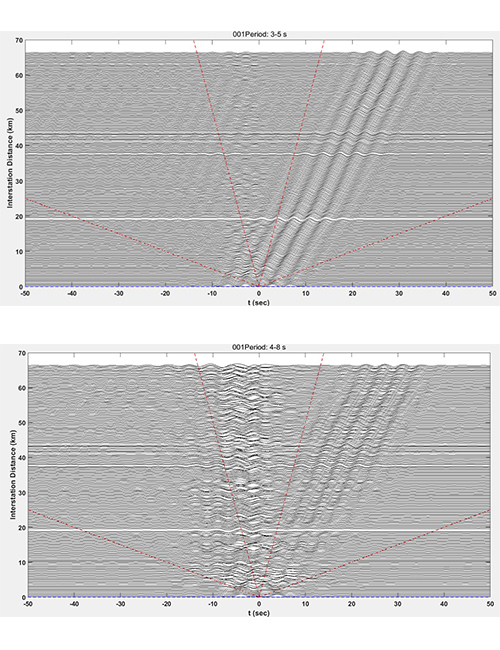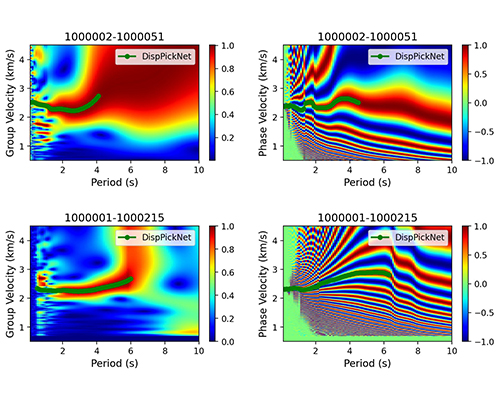


The frequency response function refers to the relationship between steady-state inputs and outputs at a given frequency. It is well known that the inflection point frequency of the seismic instrument response function (i.e. the natural frequency of the geophone) limits the frequency band range in which the data is recorded. The IGU-16HR 3C three-component Intelligent Geophone Unit has a built-in DT-SOLO 5Hz sensor. Based on typical performance, the low frequencies recorded by this sensor can usually extend down to approximately 3 - 4 Hz. The geophone response function is shown below.

Figure.1 DT-SOLO 5Hz Geophone Response Function
However, according to research and testing performed by Li Junlun from China’s University of Science and Technology, the IGU-16HR 3C 5Hz can acquire seismic data with a high signal-to-noise ratio in the low-frequency band of only 5-second cycles (0.2 Hz), for valuable ambient noise imaging applications.
The research was performed with 221 stations of IGU-16HR 3C 5Hz, deployed in a linear layout using 300m (984 feet) receiver spacing. The long-term passive recording was then processed, and the resulting cross-correlated data showed a good signal-to-noise ratio at 5-second cycles. (Due to ambient noise energy mainly coming from one end of the receiver line, the cross-correlated data has a strong one-sided signal).

Figure 2. Cross-correlated Z channel data with a 3-5 second cycle bandpass filter.
Figure 3. Cross-correlated Z channel data with a 4-8 second cycle bandpass filter.
Using dual-station methods to extract surface wave group velocity and phase velocity of the frequency-dispersion curve, it can be seen that the low-frequency signal is fully developed.

Figure 4 Extracting the Surface Wave Group Velocity and Phase Velocity
from the Frequency-Dispersion Curve.
So how can a 5Hz natural frequency geophone get such a good low-frequency signal in ambient noise imaging applications? It can be summarized by the following three points:
1. Although the response of the low-frequency signal is weak (perhaps a hundred times less compared to the high-frequency signal), as long as the response of the low-frequency signal is higher than the noise of the instrument, when the data are cross-correlated, the low-frequency signal can be distinguished.
2. Low-frequency content can more easily be extracted by adopting long-term passive source acquisition, and then stacking the recorded data to improve signal-to-noise ratio.
3. When the IGU-16HR 3C 5Hz is buried in the field, the designed configuration of metal spikes delivers strong sensor coupling which further improves the resulting data quality.
Experience and testing have shown us that when the IGU-16HR 3C 5Hz is used for ambient noise imaging applications, it is possible to attain low-frequency data down to 0.2 Hz (5 second cycles), and you are not limited to 5Hz on the low end.
